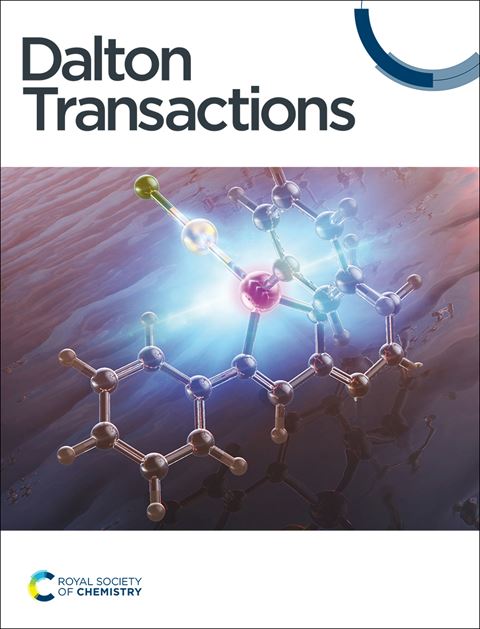Heme-Aβ Compound 0: A Common Intermediate in ROS Generation and Peroxidase Activity
IF 3.5
3区 化学
Q2 CHEMISTRY, INORGANIC & NUCLEAR
引用次数: 0
Abstract
Oxidative stress is a key factor in neurodegenerative diseases, particularly in Alzheimer’s disease (AD) which is the leading cause of dementia. A hallmark of AD is the accumulation of amyloid β (Aβ) peptides, along with redox-active metal ions and heme cofactors, all of which significantly contribute to disease progression. When heme binds to Aβ, it can drive oxidative stress through two primary pathways: firstly, reduced high-spin ferrous heme-Aβ active site may generate H₂O₂ through oxygen reduction, leading to oxidation of biomolecules and lipid membranes; secondly, this H₂O₂ can react with oxidised form of high-spin ferric heme-Aβ, initiating peroxidase-like activity that can catalyse the oxidation of neurotransmitters. These pathways converge at a crucial intermediate i.e. the heme-Aβ-peroxo complex, or Compound 0, which serves as the final intermediate in the ROS cycle and the first in the peroxidase cycle. Although, we have previously characterized other intermediates in these pathways, Compound 0 resulting from the reaction of a high-spin heme-Aβ species with peroxides has remained elusive due to its rapid hydrolysis in an aqueous environment. In this study, we report the oxidation of dopamine by peroxides catalyzed by ferric heme-Ab species and successfully stabilised and characterized Compound 0 of high-spin heme-Aβ in dimethylformamide, an organic aprotic solvent. This stabilization enables detection through stopped-flow, EPR and resonance Raman spectroscopy, thereby facilitating a deeper understanding of the oxidative stress caused by high-spin heme-Aβ.求助全文
约1分钟内获得全文
求助全文
来源期刊

Dalton Transactions
化学-无机化学与核化学
CiteScore
6.60
自引率
7.50%
发文量
1832
审稿时长
1.5 months
期刊介绍:
Dalton Transactions is a journal for all areas of inorganic chemistry, which encompasses the organometallic, bioinorganic and materials chemistry of the elements, with applications including synthesis, catalysis, energy conversion/storage, electrical devices and medicine. Dalton Transactions welcomes high-quality, original submissions in all of these areas and more, where the advancement of knowledge in inorganic chemistry is significant.
 求助内容:
求助内容: 应助结果提醒方式:
应助结果提醒方式:


